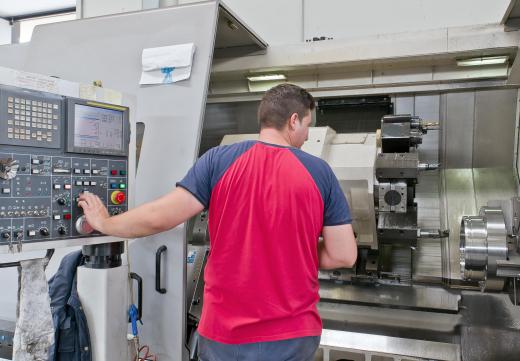A machine vice is a device used to hold a work piece when operating a milling machine or a drill press. It is adjustable in many different ways, allowing the work piece to be manipulated into any angle or position required. This type of vice is crucial when a certain angle is required to be repeated on several pieces. The machinist can mount the work piece and adjust the vice to the desired angle and position and the machined finish will duplicate the prior pieces exactly.
It should be noted that there are two common spellings of this piece of machinery. In the United Kingdom, when referring to a machine vice, the word is spelled vice. Alternatively, in the United States, machine vise is used.

In some milling operations, the cutting tool remains stationary while the machine vice is used to move the work piece into the cutting tool and complete the machining operation. The precision movement of the vice allows the machinist to create pin-point operations by manipulating the vice's controls. In other operations, the machine vice is simply used to position the work piece while it is milled. This typically occurs when machining a work piece that is flat and square.
While the vast majority of machine vice designs are operated by hand, some styles of Computer Numerical Control (CNC) machines utilize a hydraulically operated and controlled vice. This allows the vice to position the work piece in accordance to a programmed set of dimensions. As the CNC machine creates and finishes one set of machining operations, the machine vice rotates the work piece into position for the next programed cutting pass. The computer-aided accuracy of the CNC makes it possible for several thousand finished pieces to be machined exactly alike.
The evolution of the machine vice allowed milling and machining projects to be completed with a great deal of precision. Machinists could complete several identical work pieces in a single shift. By adapting the vice to a CNC machine, a machinist can now create dozens of intricate and highly detailed pieces in a single shift with spot-on tolerances. Precision, accuracy and repeatable outcome are just some of the benefits that come from working with an infinitely adjustable vice and a milling machine.
